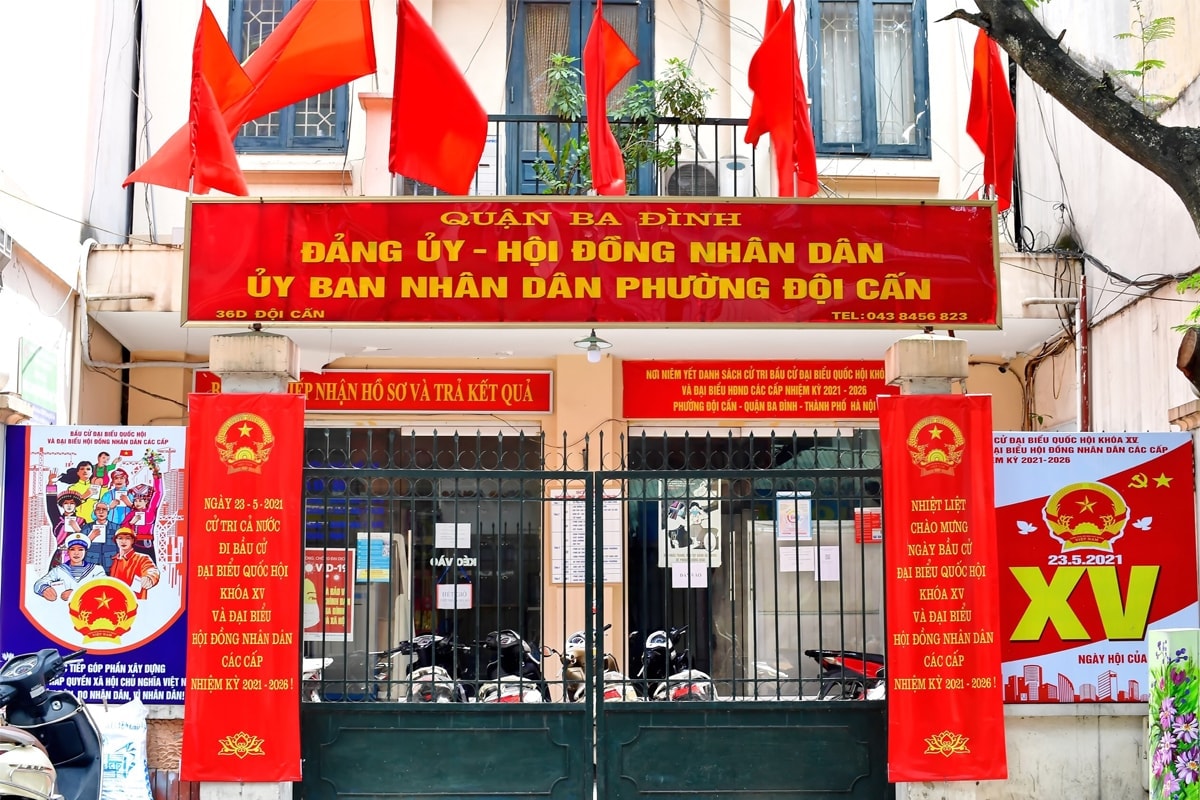Removing the authority to issue legal documents at the commune level, allowing agricultural land to be used as commercial housing on a pilot basis... are new policies that take effect in April.

Abolish the authority to issue legal documents of the commune level
The Law on Promulgation of Legal Documents 2025 takes effect from April 1.
Notably, the new law clearly stipulates that the system of legal documents includes 14 types of documents. Compared to the current law, the new law eliminates two types of documents including resolutions of the People's Council at the commune level and decisions of the People's Committee at the commune level.
Thus, from April 1, the authority to issue legal documents of commune-level authorities will be abolished to ensure consistency with the proposed content stated in the project to innovate and perfect the law-making process that the National Assembly Party Delegation has submitted to the Politburo.
In addition, the Law on Promulgation of Legal Documents 2025 adds a new form of legal document issued by the Government, which is a resolution.
Explaining the addition of the Government's resolution to become a legal document, the Ministry of Justice said that due to the practical work of directing, operating and responding to the Government's policies, especially during the period of preventing and fighting the COVID-19 pandemic and economic recovery, it was necessary to study and supplement the Government's authority in issuing a separate form of document (in addition to the decree).
This document has a quick and timely construction and issuance process so that the document takes effect after issuance and immediately handles arising practical problems.
Director's salary cannot exceed 10 times that of the employee.
Effective from April 15, Decree No. 44/2025 of the Government regulates the management of labor, wages, remuneration, and bonuses in state-owned enterprises.
Accordingly, the Decree stipulates that the salary fund of employees and the executive board is determined through the average salary level or the stable salary unit price. This method is only applicable to enterprises that have been in operation for at least the expected period of applying the stable salary unit price.
The Decree clearly states that, depending on the tasks, nature of the industry, and conditions of production and business activities, enterprises decide to choose one of the two methods of determining the salary fund mentioned above.
Enterprises with many different fields of production and business activities and can separate labor and financial indicators to calculate labor productivity and production and business efficiency corresponding to each field of activity can choose the appropriate method from the above two methods to determine the salary fund corresponding to each field of activity.
Regarding salary distribution, the Government stipulates that employees and executives are paid according to salary regulations issued by the enterprise.
In which, employees' salaries are paid according to their position or job title, linked to labor productivity and each person's contribution to the production and business results of the enterprise.
The salary of the executive board is paid according to the title, position and production and business results, in which the salary of the General Director and Director (except in cases where the General Director and Director are hired to work under a labor contract) must not exceed 10 times the average salary of employees.
When developing a salary payment regulation, the enterprise must consult with the organization representing employees at the facility, organize dialogue at the workplace according to the provisions of labor law, report to the owner's representative agency for inspection, supervision and public disclosure at the enterprise before implementation.
Each teacher cannot hold more than 2 positions at the same time.

Circular 05/2025 of the Ministry of Education and Training regulating the working regime for general education and university preparatory teachers, effective from April 22.
In particular, the notable point is the regulation that each teacher cannot hold more than 2 concurrent tasks (including concurrent professional work; concurrent positions in the Party, mass organizations and other organizations; concurrently holding other job positions).
Regarding the reduction of teaching hours for teachers who also hold professional jobs, the Ministry of Education and Training stipulates that homeroom teachers in general schools are allowed to reduce teaching hours by a maximum of 4 hours/week; heads of professional groups or heads of subject groups are allowed to reduce 3 hours/week; deputy heads of professional groups or deputy heads of subject groups are allowed to reduce 1 hour/week.
The head of the student management team in a boarding or semi-boarding school for ethnic minorities is given 3 periods/week reduction; the deputy head of the student management team in a boarding or semi-boarding school for ethnic minorities is given 1 period/week reduction. When the school does not have staff in charge of equipment and laboratories, teachers who are also in charge of subject classrooms (except for the computer room) are given 3 periods/subject/week reduction, and the head of the educational equipment room is given 3 periods/week reduction...
The Circular also stipulates a reduction in teaching hours for other subjects such as: teachers in probationary period are reduced by 2 hours/week; female teachers with children under 12 months old teaching at primary schools are reduced by 4 hours/week; teaching at other educational institutions is reduced by 3 hours/week...
Labor classification standards according to working conditions
From April 1, Circular 03/2025 of the Ministry of Labor, War Invalids and Social Affairs (now the Ministry of Home Affairs) regulating labor classification standards according to working conditions takes effect.
Accordingly, there are 6 types of working conditions, from type I to type VI.
In which, occupations and jobs with working conditions classified as type I, II, III are occupations and jobs that are not heavy, non-toxic, and non-dangerous.
Occupations and jobs with working conditions classified as type IV are arduous, toxic, and dangerous.
Occupations and jobs with working conditions classified as types V and VI are especially arduous, toxic and dangerous.
The Circular also clearly states that the above 6 types of working conditions are assessed and classified according to the following methods: assessment and scoring methods; other methods (statistical and experience methods; combined methods).
Agricultural land is piloted for commercial housing

Resolution 171 of the National Assembly on piloting the implementation of commercial housing projects through agreements to receive rights or have land use rights, takes effect from April 1.
Currently, investors are only allowed to carry out commercial housing projects when they have the right to use residential land, according to the 2014 Housing Law. However, from April 1, they are allowed to negotiate the right to use agricultural land, non-agricultural land (commercial and service land) that is not residential land, and other land in the same plot to carry out commercial housing projects. This policy is being piloted for 5 years.
In case the land plot or area has a part managed by a State agency or organization but cannot be separated into an independent project, it will be included in the common land area for project establishment and the State will reclaim it and hand it over to the investor without auction or bidding.
The condition for the project to pilot this policy is that the area or plot of land must be in an urban area, in accordance with the district-level land use planning. The pilot project must have a maximum of 30% of additional residential land area during the planning period (compared to the current land use status) according to the land allocation and zoning plan of the provincial planning until 2030.
The provincial People's Committee will consider and grant licenses to real estate business organizations to receive land use rights transfers. Along with that, real estate business enterprises must meet the conditions on land, housing law, real estate business, and investment.
In case the investor receives the transfer of land use rights with origin as national defense and security land, written approval from the Ministry of National Defense and Public Security is required.
TH (synthesis)